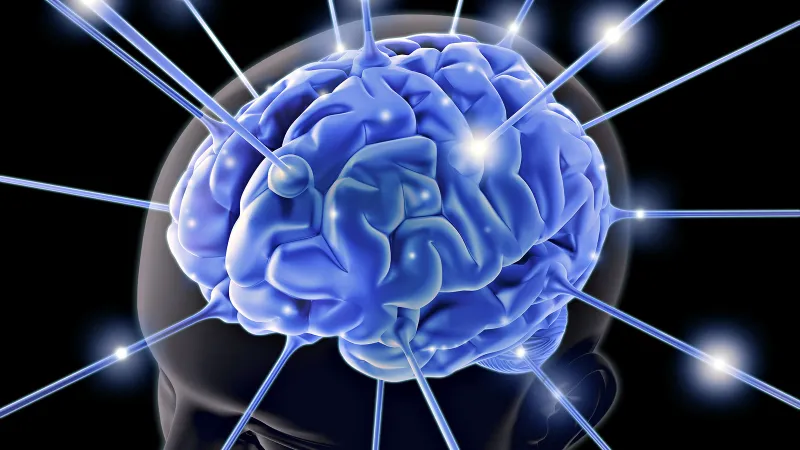Neuroscientists, neurosurgeons, and professors have researched and tried to understand the human brain for centuries. But the organ remains only partly understood, and many neurological disorders like Parkinsons and blindness have no known cure. Billionaire entrepreneur Elon Musk has ventured into the health industry with his company Neuralink. He recently revealed new developments in Nueralink’s work.
He said he is essentially trying to put the human brain on “the path of symbiosis with computers.”
“With a high bandwidth brain-machine interface, we can go along for the ride and effectively have the option of merging with AI,” he told BBC.
Nueralink’s new project consists of an array of threads connected wirelessly to a chip embedded in the skull, which Musk said can eventually be used to treat neurological disorders like paralysis and even blindness.
To gain a better understanding of what Musk is trying to do with Neuralink, The Daily heard from clinical associate professor of neurosurgery and psychiatry and behavioral sciences Maheen Adamson. She is the senior scientific research director for the Defense and Veterans Brain Injury Center in Palo Alto, and she completed a postdoctoral fellowship in psychiatry and behavioral sciences at Stanford School of Medicine.
Maheen shed light on research she and others in her field have done that is relevant to Nueralink’s future developments.
“I use repetitive transcranial magnetic stimulation so I use big magnets on top of the head so you could actually change the plasticity of the neurons,” Maheen said. “We use it for depression, anxiety, mild-traumatic brain injury and we’re also now getting into using devices that deliver low-intensity focused ultrasound to certain areas of the brain.”
Neuralink has already completed successful trials of wiring threadlike sensors on lab rats. The company predicts that it will start human trials as early as next year.
“I think Elon Musk is amazing, and I think his work is fascinating,” Maheen said. “What he is doing is combining both what I do and what has been done in animal work for almost many centuries. People put a lot of [electrode] arrays in rats. Usually, these arrays are done so you can receive information from these electrodes and characterize this received information.”
Maheen noted that the device Neuralink is developing would integrate both the receiving of information and the delivering of the stimulus, whereas people have previously done either one or the other. According to Neuralink, the device will be able to receive and transmit information by virtue of being both invasive and non-invasive to the human body.
“[Musk said] those threadlike electrodes are also capable of delivering a stimulus,” Maheen said. “I think that in itself is the key to how this [device’s development] could be done to actually treat neurological illnesses — not just in rats but also in humans.”
It’s the first of its kind, according to Maheen. She’s never seen the two things — this transmitting and receiving of information — together.
Though Neuralink’s device will hopefully help with complex neurological disorders such as paralysis and blindness, some diseases are too complex for any machine to cure, Maheen said. The most probable domain of the body in which the device could effectively cure disorders is the motor domain which controls functions of movement.
“The outcome would be immediate,” Maheen said.
Numerous disorders form from the motor domain, including paralysis, dysfunctional movement patterns and postures, poor coordination and inability to control voluntary postures and movement patterns.
Blindness, however, is much more difficult to treat, as there are numerous factors that can affect vision.
“Vision is very complicated,” Maheen said. “A lot of people are treating vision by going to other senses …when you are blind depending on what kind of blindness you have, you can map certain motor areas and certain touch areas in a way to where you can use those areas to actually see.”
Nueralink’s device would, in theory, probably only be able to cure blindness using the motor domain of the brain — any other domain may require a lot more time and research, according to Maheen.
Potentially becoming the first of its kind, Nueralink’s device may also come with potential for numerous complications.
“Just capturing the stimulus, what ends up happening, when you do something with the brain, after a while, it gets habituated,” Maheen said. “There is going to be problems with how do you get the proper signal to get the response that you want because the brain will attenuate.”
As with anything to which our body can become accustomed, such as antibiotics, the brain will react less with the stimulus after some amount of time, Maheen said. Thus, the device might not be a long-term cure unless Neuralink finds a way to tackle this issue.
“One of the things you have to consider is, ‘Who is the ideal patient?’ Because the ideal patient is not used to other drugs,” Maheen said. “Because if you are going to work with someone who is already on L’Dopa or another motor, paralysis treatment, then [using a new method] becomes more difficult.”
Contact Clyde John at cjtniles ‘at’ gmail.com.
